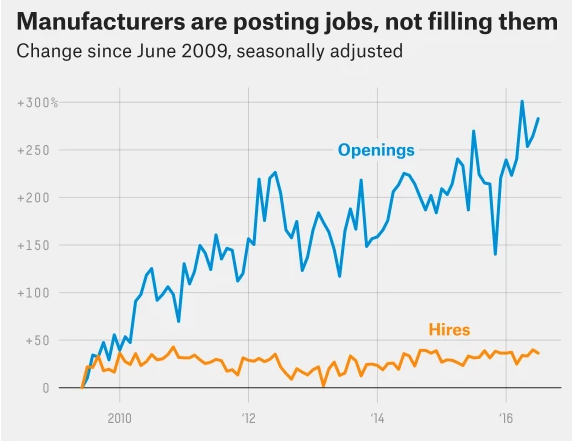While just about every industry feels the burden of this mass exodus of boomers from the workforce, the manufacturing industry faces the greatest risk of failing to adapt. In this article, we’ll offer a snapshot of the current and projected state of the manufacturing industry, and even more important, we will outline four implementable strategies manufacturing companies can use to overcome the skill gaps facing the industry.
There are more than 12 million manufacturing workers in the United States, accounting for 9% of the country’s workforce. The industry has seen a solid bounce back since the end of the Great Recession, adding over 800,000 workers in the last decade. Further, more than 50 percent of U.S. manufacturing companies plan to increase production by more than five percent over the next five years. As the industry continues to strengthen and expand, companies need to be able to locate high-quality talent to fill vacant positions created by retiring boomers and economic expansion.
Why is it so much harder for manufacturers to find new talent than other industries? For years, manufacturers have acknowledged the skills gap that exists between the talent they need and the talent they can find. Now, more than ever, that gap is widening, and it’s time for manufacturers to catch the wave and adjust.


